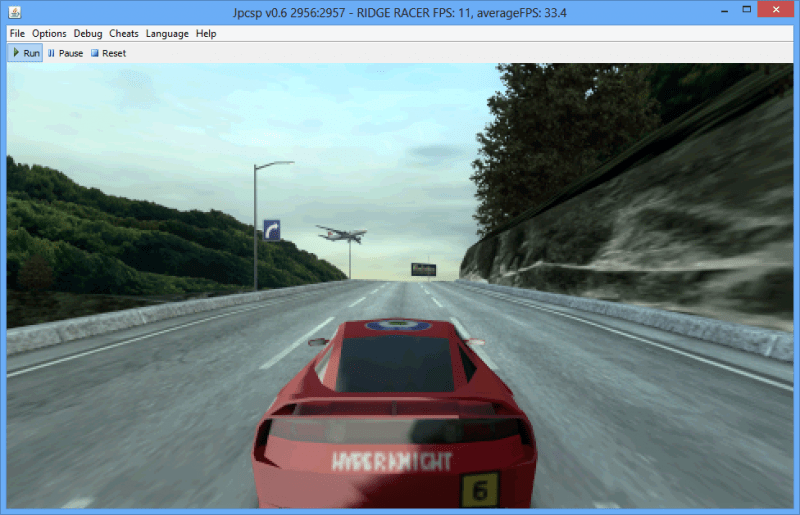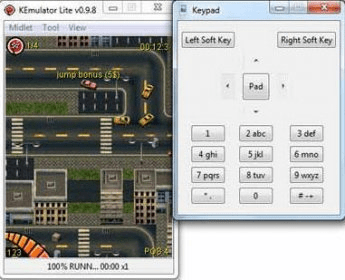

- #Mac emulator java how to
- #Mac emulator java install
- #Mac emulator java update
- #Mac emulator java download
- #Mac emulator java windows
Java -ea =~/cacerts ="changeit" $APPLICATION_ARGUMENTSĬurrently, only ports 801-10255 are needed by the emulator endpoint.Ĭontrols the total number of physical partitions, which in return controls the number of containers that can be created and can exist at a given point in time. keytool -keystore ~/cacerts -importcert -alias emulator_cert -file ~/emulatorcert.crt update-ca-certificatesįor Java-based applications, the certificate must be imported to the Java trusted store.
#Mac emulator java update
Update the TLS/SSL certificates, which will update the /etc/ssl/certs/ folder. cp ~/emulatorcert.crt /usr/local/share/ca-certificates/ Commonly on Debian distributions, it is located on /usr/local/share/ca-certificates/. curl -k > ~/emulatorcert.crtĬopy the CRT file to the folder that contains custom certificates in your Linux distribution. Alternatively, the endpoint below which downloads the self-signed emulator certificate, can also be used for signaling when the emulator endpoint is ready to receive requests from another application.
#Mac emulator java download
Next, download the certificate for the emulator. This step is required when Direct mode setting is configured using Cosmos DB SDKs (.NET, Java). Retrieve the IP address of your local machine. Use the following steps to run the emulator on macOS:
#Mac emulator java install
To get started, visit the Docker Hub and install Docker Desktop for macOS. The emulator only supports MacBooks with Intel processors. The Linux emulator supports a maximum ID property size of 254 characters. The Linux emulator does not offer multi-region replication.īecause the copy of your Azure Cosmos DB Linux Emulator might not always be up to date with the most recent changes in the Azure Cosmos DB service, you should always refer to the Azure Cosmos DB capacity planner to accurately estimate the throughput (RUs) needs of your application. For instance, Strong and Bounded staleness consistency has no effect on the emulator, other than signaling to the Cosmos DB SDK the default consistency of the account. While consistency levels can be adjusted using command-line arguments for testing scenarios only (default setting is Session), a user might not expect the same behavior as in the cloud service.
#Mac emulator java how to
For more information on how to change this value, see Set the PartitionCount value article. When using the Azure Cosmos DB Emulator, by default, you can create up to 10 fixed size containers at 400 RU/s (only supported using Azure Cosmos DB SDKs), or 5 unlimited containers. The Linux emulator is not a scalable service and it doesn't support a large number of containers. With the Linux emulator, you can create an Azure Cosmos account in provisioned throughput mode only currently it doesn't support serverless mode. Since the Azure Cosmos DB Emulator provides an emulated environment that runs on the local developer workstation, there are some differences in functionality between the emulator and an Azure Cosmos account in the cloud:Ĭurrently, the Data Explorer pane in the emulator fully supports SQL API clients only. Differences between the Linux Emulator and the cloud service You can develop and test applications using the Azure Cosmos DB Linux Emulator, and deploy them to Azure at global scale by updating the Azure Cosmos DB connection endpoint.įunctionality that relies on the Azure infrastructure like global replication, single-digit millisecond latency for reads/writes, and tunable consistency levels are not applicable when you use the emulator. It supports equivalent functionality as the Azure Cosmos DB, which includes creating data, querying data, provisioning and scaling containers, and executing stored procedures and triggers.


The Azure Cosmos DB Linux Emulator provides a high-fidelity emulation of the Azure Cosmos DB service.
#Mac emulator java windows
For heavier workloads, use our Windows emulator. We do not recommend use of the emulator (Preview) in production. The default number of physical partitions which directly impacts the number of containers that can be provisioned is 10. Users may experience slight performance degradations in terms of the number of requests per second processed by the emulator when compared to the Windows version. The Cosmos DB Linux Emulator is currently in preview mode and supports only the SQL API.


 0 kommentar(er)
0 kommentar(er)
